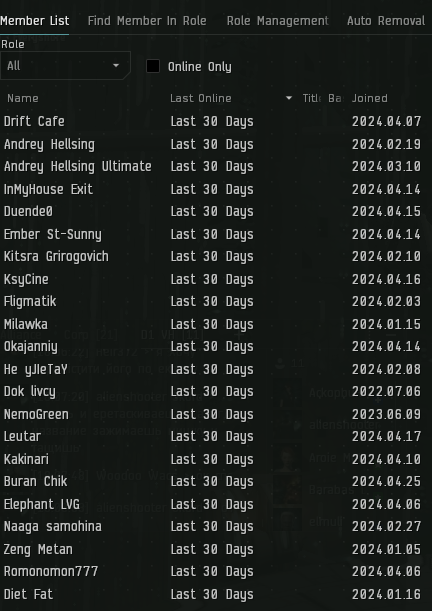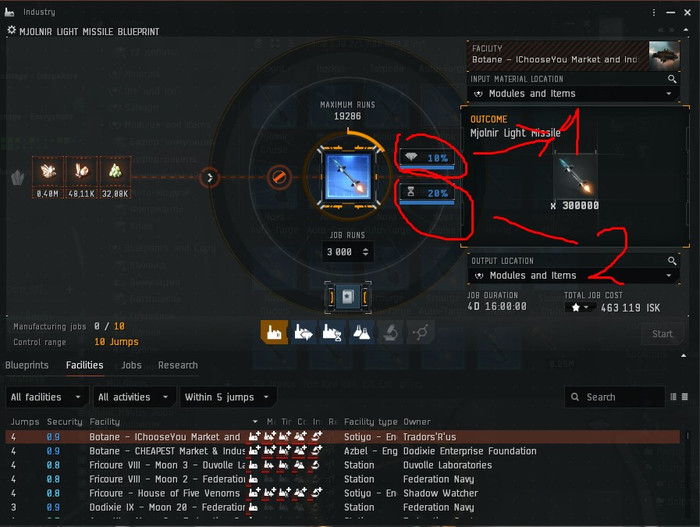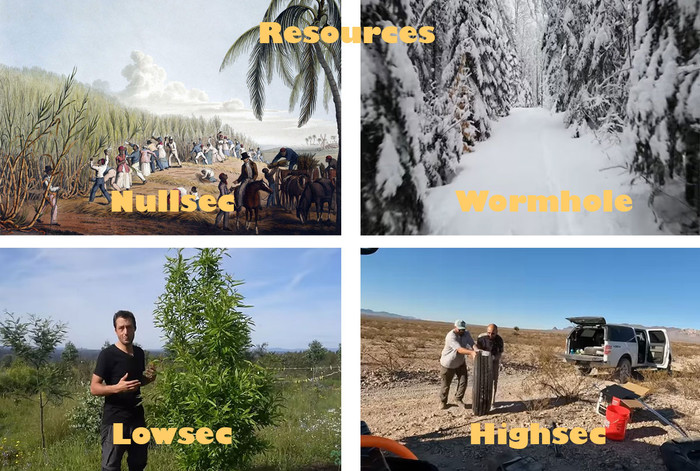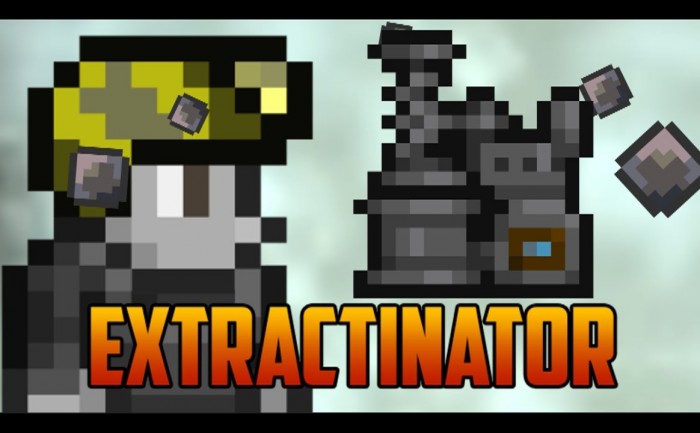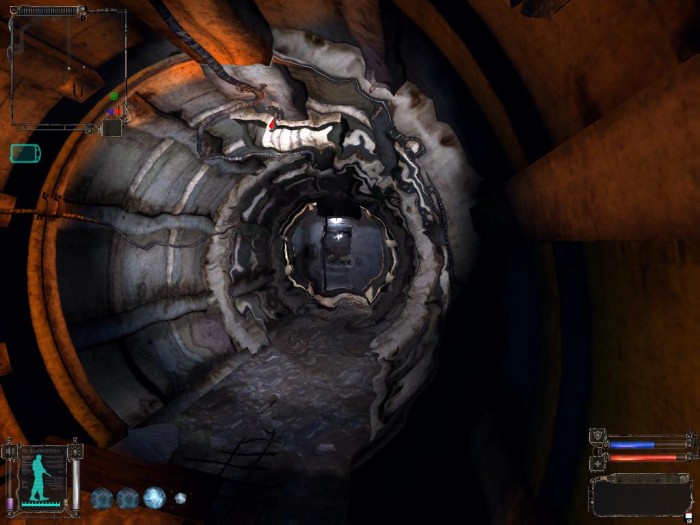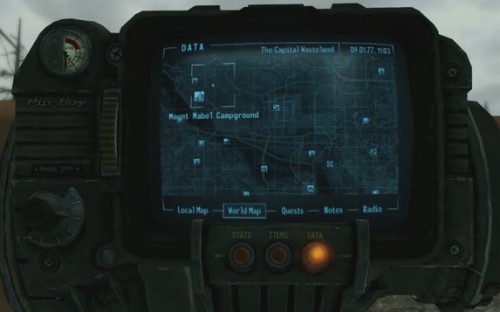13:01
Production 5: Modernization
When manufacturing in Eve, sooner or later you will have to face the so-called "glass ceilings". Obviously, you may have noticed that for 30 inventory lines from one account, you don't need 30 production lines, but 60 or 90. And this, accordingly, means paying for another account, training it out, and an additional 500 PLEX for renting another factory every month.
Then, for example, a rebalance patch comes out, and some type of resource: minerals, salvage, etc. becomes easier to collect, it becomes 25% cheaper, as was the case with morphite recently, and now to earn as much as before, you only need to build 25% more! Again, everything is solved by renting an additional factory and paying for another account, for a larger number of lines.
Or you can go the way of improvement and modernization due to skills for anufacturing speed, implants, and of course citadels, which will be discussed in this article. I wanted, purely for myself, to calculate when it is profitable to install a structure, and in how long will it pay off in cost? We will gradually throw parameters into a heap and maybe in the end it will be possible to derive a formula for calculating the profit of installing citadels!
1) Types of structures
The first Raitaru of our corporation was installed in one jump from Dodixie, following the example of Perimeter in Jita, with the aim of building cheaper goods than those that were sold at that time, 2020, I think. And for all the claims, in the end, it stood abandoned for six months, no one touched it. Then a patch came out where it was necessary to install expensive cores in the structures, and Raitaru died in the first wave of demolition of cytos due to cores from local Gallente pirates, who then moved to Amarr.
Astrahus - 3 billion
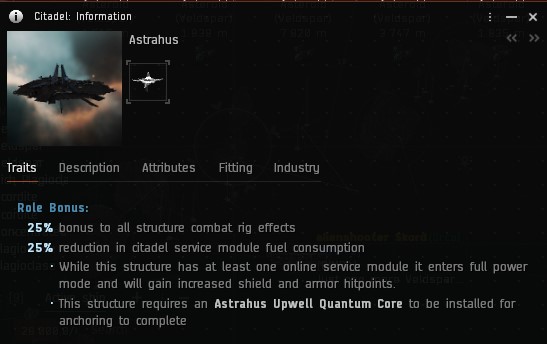
About 2-3 billion in fit, a discount on the cloning module for fuel and a bonus for combat rigs. Of all the medium structures, the most tanked and capable of equipped light fighters. Astrahus are installed so that there is an opportunity to dock often, these are wh, low, null, etc. where there are no NPC stations and cloning in the systems.
Raitaru - 2kkk
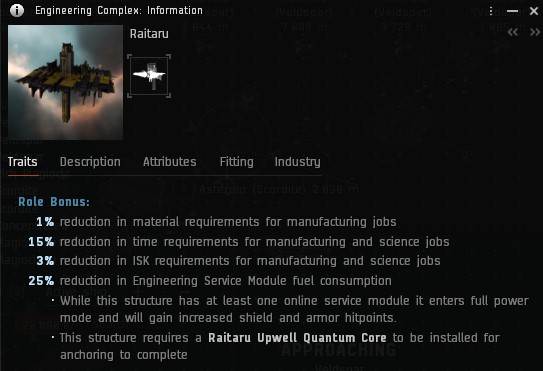
Own plant, compared to Astra is thin, but has good bonuses for production, namely:
- 1% discount on materials for all work
- 15% acceleration of construction and inventory
- 3% reduction in the cost of construction and inventory
In addition, with engineering rigs and space (low, high, null), you can significantly reduce your construction costs for materials. But, as you understand, such a hat as logistics appears.
Athanor - 2 billion
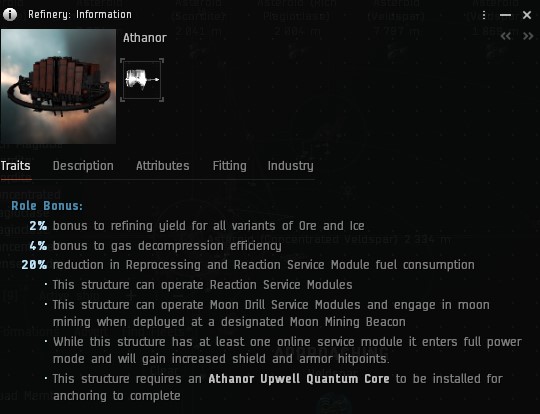
Everything related to the extraction of resources and their subsequent processing. Of the features:
- 2% bonus for ore and ice processing. With a T2 rig in highs, you can squeeze out 74% reprocessing.
- Athanor in lowsec and below can compress gas
- Athanor in lowsec and below can brew reactions for produsing.
- Athanor can help mining moons starting from 0.5 systems and below, then reactions are brewed from moonmats.
Large structures are a feature of all large structures, the ability to stick a market, and 5 slots for modules. Additional reinforcement timer, armor.
Fortizar - 20 billion
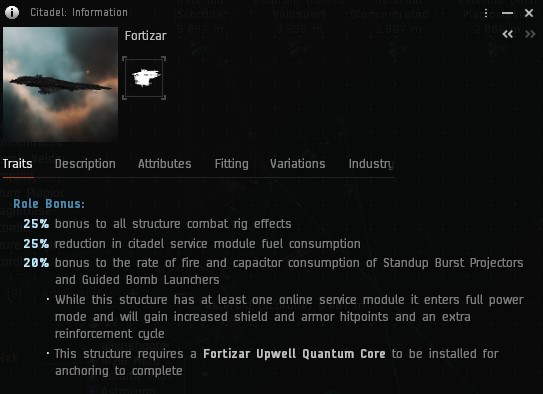
Astrahus's big brother, even more HP, fighters and attack modules. Like its predecessor, Fortizar is often used for strategic reasons. For example, in logistics, if I'm not mistaken, dreadnoughts can get to the fortizar. In wormhote in C2, for example, it is more difficult to evict from the fortizar than from the astrahus.
An interesting topic of the fort is that the market module becomes available, this is 0% trading in plexes, injectors, extractors and free buy orders for any type of goods. And also large structures have "dual" rigs, with large bonuses compared to medium citas.
Azbel - 10 billion
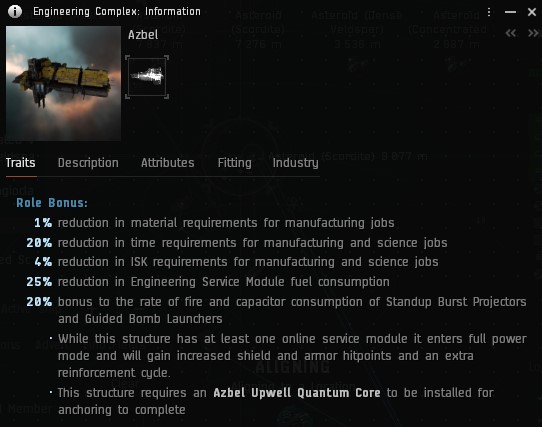
The elder brother of the raitary, from the new:
- 20% to construction speed
- 4% reduction in construction cost
Tatara - 15 billion
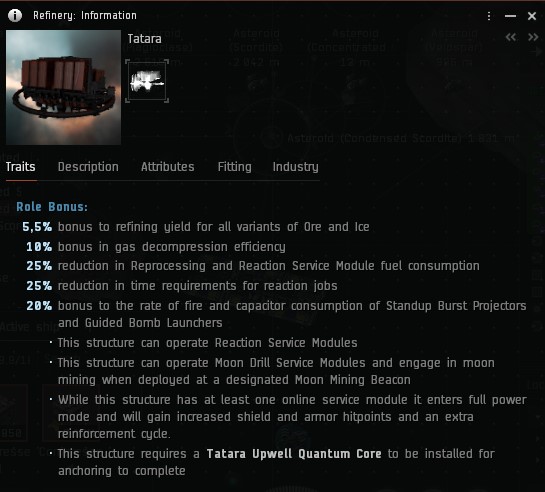
Improved version of Athanor, more tanking and better bonuses. It seems like in highs with a T2 rig you can get a max 75% yield from processing ore and ice, or even more?!
For nothing to do, just for fun we'll add extra large structures. Of the features, you can't put them in highs. Titans and Supercars can be docked in Keepstar, and they can be produced on Sotiyo. Even better rigs with bonuses for construction and defense. More slots for modules.
Sotiyo - 40 billion
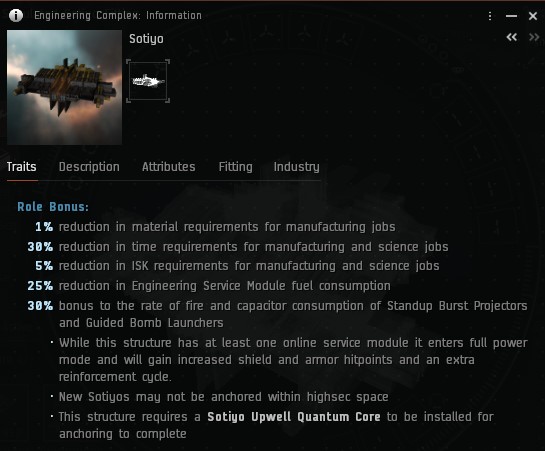
Max bonus for construction.
Keepstar - 250 billion
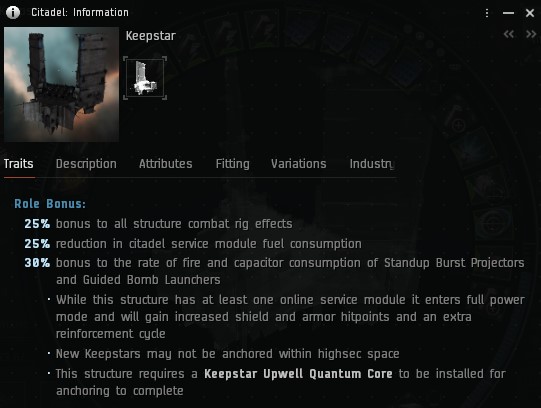
So, there is a certain set of structures with their cost. Let's move on to the next parameter on the list.
How to get 1kk sp on main / Как получить на основу 1кк сп?
On any account, even an old one, follow the link, and at the bottom under the fields, click "Log in to become a recruit". You don't need to fill out the form: 1млн навыков бесплатно сп / 1mln free skills.
2) Life cycle
The second corp citadel was Astrahus in the highsector. It stood for one year, it came to installing a rig on it for building ships. In terms of costs, about 5 billion were spent on maintenance and about 50kk ISK in profit from taxes for using services. It was killed by highsector pirates, benders, a fleet of leshaks.
In different parts of space, citadels live differently. Some for a long time, and some do not. You may be surprised, but the presence of a rig on a structure also shortens its life cycle. After all, the natural process of the free market sooner or later leads to a monopoly, the displacement of competitors, or even to unfair types of competition, in the form of sawing off a neighbor's structures.
Let's take the pessimistic option that there is no fleet for protection and the tanking is on a timer for 3 am. Accordingly, now we will pass the citadels through various cosmos of New Eden, and see how long they will live:
1) Capitals of lowsec collectives. Unlucky, opened wormhole:
- all citas die on the first 15-minute timer, and if you are lucky, then on the second, after installing the core. Lifespan is 1 day.
- All citas die within - 7 days, on average.
- The life cycle of citadels is on average 30 days.
- Astrakhus - 1 year
- Raitaru, Atanor - 1 month
- Azbel, Fortizar, Tatara - 2 months
- Astrakhus - 1 month
- Raitaru, Atanor - 7 days
- Fortizar, Azbel, Tatara - 1 day
- Keepstar and Sotiyo - 1 day
6) Wormhole C1:
- Astrakhus - 6 months
- Raitaru, Atanor - 2 months
- Fortizar, Azbel, Tatara - no data
- Keepstar, Sotiyo - no data
Now, in addition to the cost of the structure, we also have a visual representation of its lifespan. For further comparison of results, you will need preparatory material:
Activity
"The third structure of the corp was Astrahus in Wormhole C1. It stood for one year, was cut out by a multiboxer on Eos and Nestors, 20-30 windows, no chance."
All types of activities in Eve are divided into three types, like the structures listed above, you either:
- Extractor - extraction of resources, raw materials, PVE farm, materials for construction. Ore processing. Athanor, Tatara - extraction and processing of ice, ore, etc.
- Builder - production of products from resources obtained by the extractor. Raitaru, Azbel, Sotiyo for construction.
- Trader - purchase of products, resources cheaper and sale at a higher price. Astrakhus, Fortizar, Keepstar. This is not only trade but also safe logistics, for example, jump trucks. Conditionally.
All other activities, this can be said to be an addition to the three main ones above. The interesting thing is that the extractor can live on astrahus. For example, the same wormhole, he just farms and spends the night in the citka. And the merchant can use azbel, because there is a trading module enabled there, etc.
The ratio
"Athanor was the fourth corporate station, on it they mining the moon every week at 0.5 for several months until it was demolished by local lowsec pirates."
Let's compare the prices of structures to their life cycle:
1) Capitals of lowsec collectives. Unsuccessful, opened wormhole:
- 2-250kkk - 1 day = 2-250kkk
- 2-20kkk - 7 days = 300kk-3kkk
- 2-20kkk - 30 days = 70kk-700kk
- Astrahus 3kkk - 365 days = 80kk. Raitaru, Athanor 2kkk - 30 days = 70kk
- Fortizar, Azbel, Tatara 10-20kkk - 60 days = 200-300kk
- 3kkk Astrakhus - 30 days = 100kk
- 2kkk Raitaru, Athanor - 7 days = 300kk
- 10-20kkk Fortizar, Azbel, Tatara - 1 day = 10-20kkk
- 40kkk-250kkk Keepstar and Sotiyo - 1 day = 40-250kkk
- 3kkk Astrakhus - 180 days = 16kk
- 2kk Raitaru, Athanor - 60 days = 35kk
Conclusion
Having compared prices and relative lifetimes, we have received a minimum turnover per day from construction and trade, or profit from PVE extract classes, if the structure was installed for the convenience of farming. If the citadel was installed to get fun and fights, then it will be possible to clearly see how much of the opponent's ships need to be killed per day and how much time it takes for the costs of such fun to be justified.
Thus, you can tank not only with a defense fleet or a 3-am timer, but also with turnover from the installed structure. Pay off the citadel faster than the pirates will destroy it. Install a new one and live on the difference.
Fuel
"The fifth citadel was again an astrahus in C1, stood for 30 days and was demolished by a solo guy in three windows, two marauders and a hauler with cap batteries. Which was then demolished by random guys, in his C1 dreadnought phoenix and fortizar, 2 months after the astrahus was washed away."
It is important to mention that the calculations were made without a monthly fee for modules operating on the citadel. They can be added to the cost. Like taking the cost of the citadel per day and adding fuel costs. You get a clear minimum turnover, an indicator of when you can put the structure.
Pandemic-Goons war 2025
With the sudden attack of the Goons on the Pandemics in June, the turnover in trade and production increased greatly. In 10 days, the turnover reached the monthly norm, and then returned to the normal summer minimum. It would have been possible to make x2 profit if there was a greater depth of orders, manufacturing lines, production capacities, or a buffer in the storage of finished items / raw materials.
Interesting conclusion, those who produce / supply weapons for it love war the most, they will support it in every possible way so that it does not end. And the question of workers from a military factory in real life "When will we be able to earn so much money?" sad, but current reality.
An unbreakable wall?
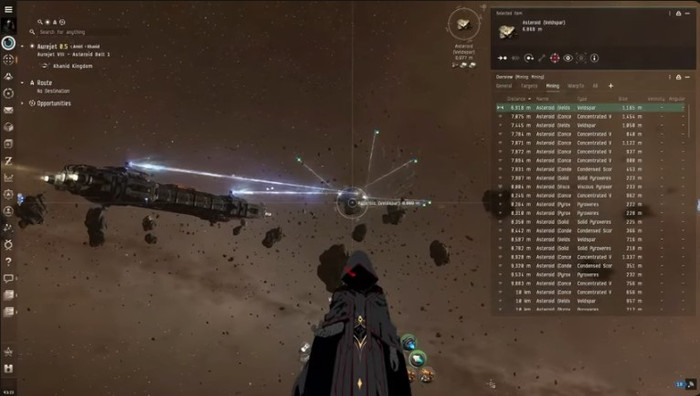
https://www.youtube.com/watch?v=Y-nxmxpoL7g
Written based on a video where the author shares his experience of building in the game. In short, he farmed ISK for a month to buy a sotiyo, put it in lowsec and build motherships and Titans on it. The idea is basically good for a newbie in the game.
He paid some guys to guard him during the installation of the citadel, but they never showed up, taking the money. And when he was taking the core and blueprints to sotiyo in a truck, he was killed by low-sec pirates, who demanded several billion so that they wouldn't blow up sotiyo. But he didn't have any isks at all because he spent everything he had. And they blew up his structure, and the guy left the game for a year.
This is a standard trap, which teams that play for 10-20 years, catch newbies and new corporations, not allowing them to develop. That you invest all your ISK in one thing, they drain it from you, you leave the game. Be it a vexor for expeditions in low, an multispectrum with 4/10 inside a gila in Uedama blown up by gankers, or a phoenix navi dreadnought on the 5th agent, dropped by a dozen dreadnoughts.
The author of the video came to the conclusion that 10-20 year old corporations are sitting on resources and do not allow new teams to develop. Since they are deeply entrenched in space, they have concreted everything. This is a kind of impenetrable wall, and here the choice is you either join these teams as a pilot or a corporation (you become "part of history" or "a legend" :), they absorb you, or they simply do not allow you to develop. Moreover, in any space. It's good that everything has a beginning and an end o7
And as in evolution, it is usually not the strongest species that survives during changes, but the one with a mutation capable of resisting new conditions. The remaining species are simply discarded by nature and die. And the mutated species continues to develop in the new world. \0/
